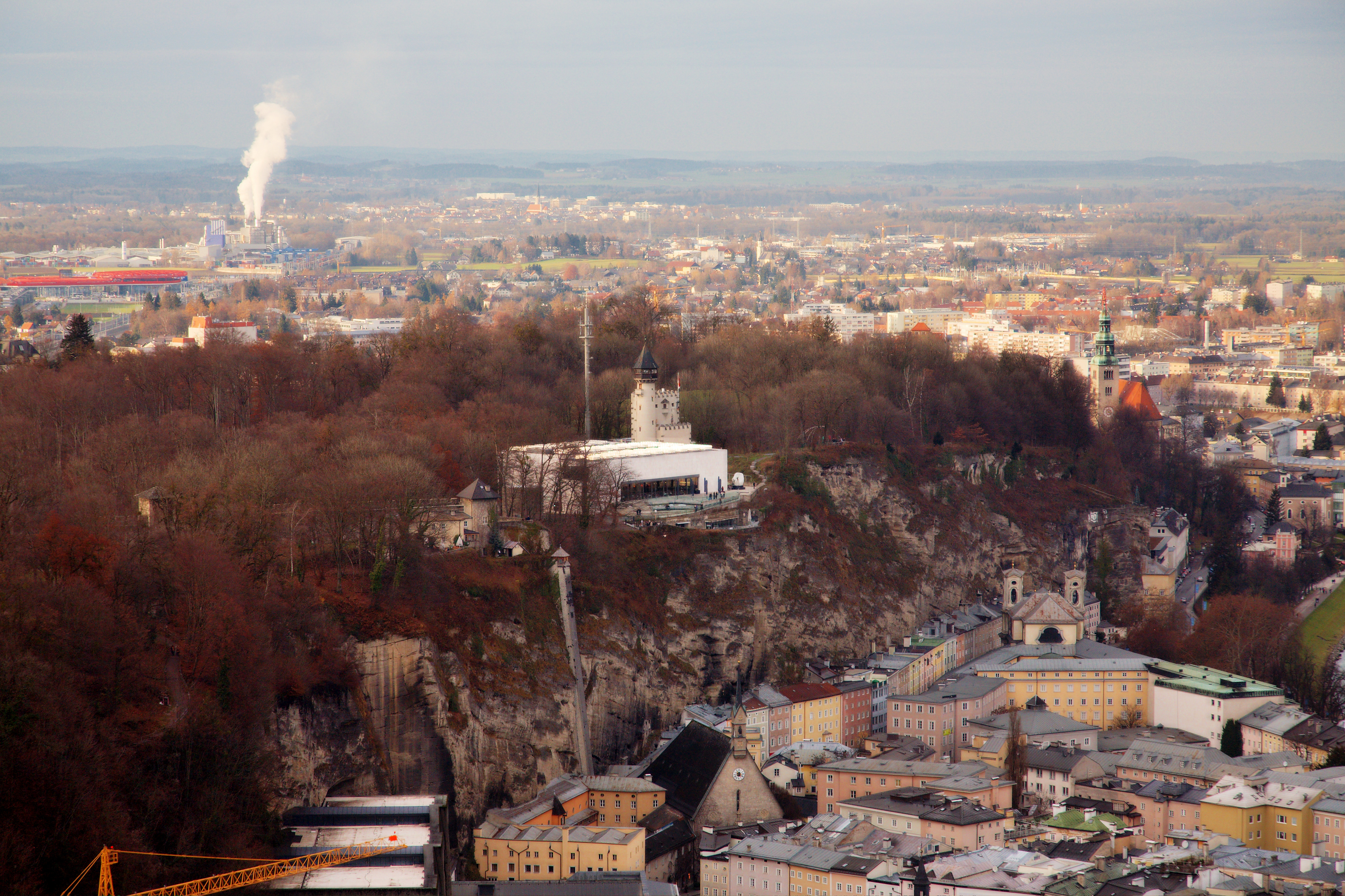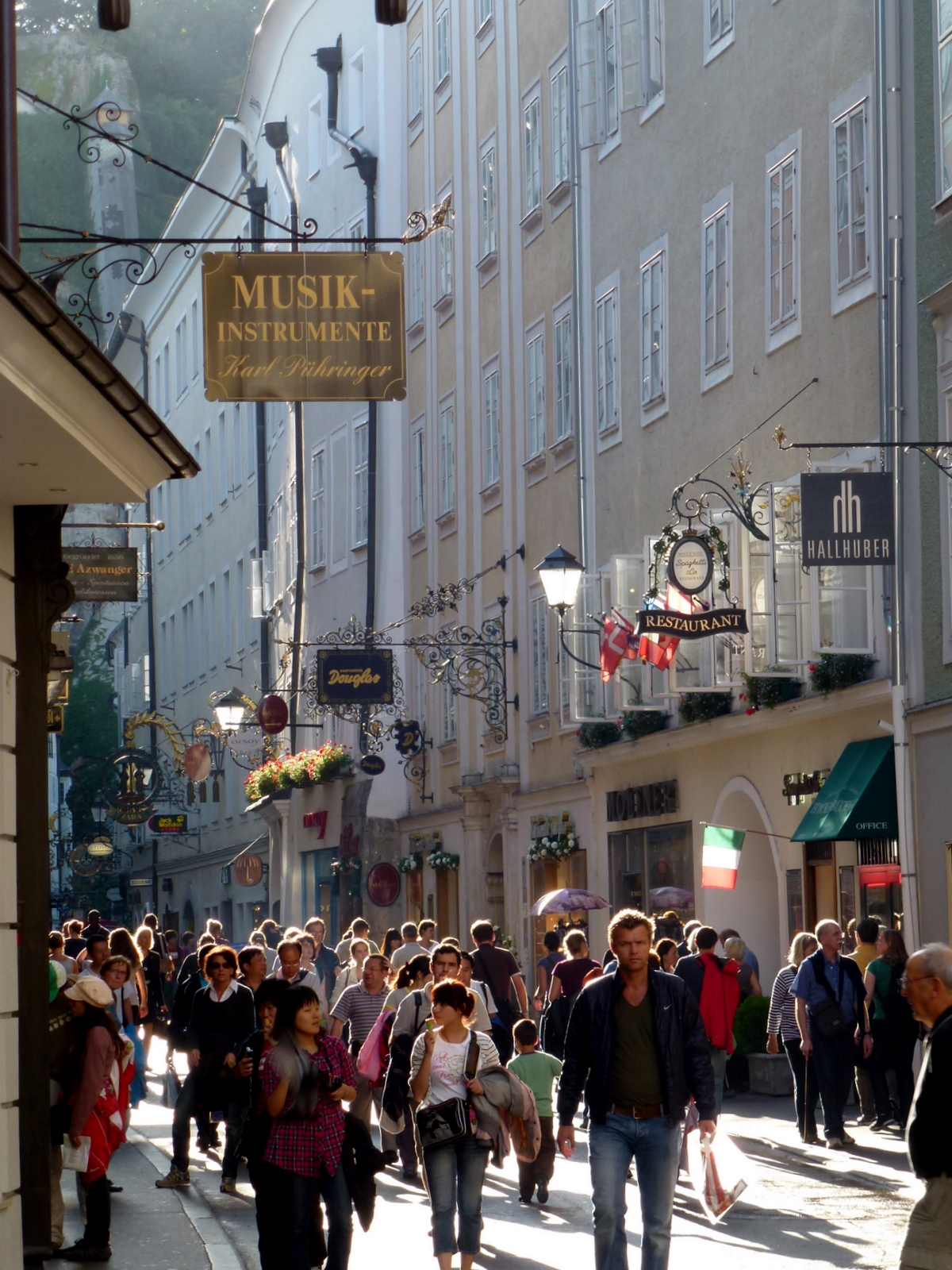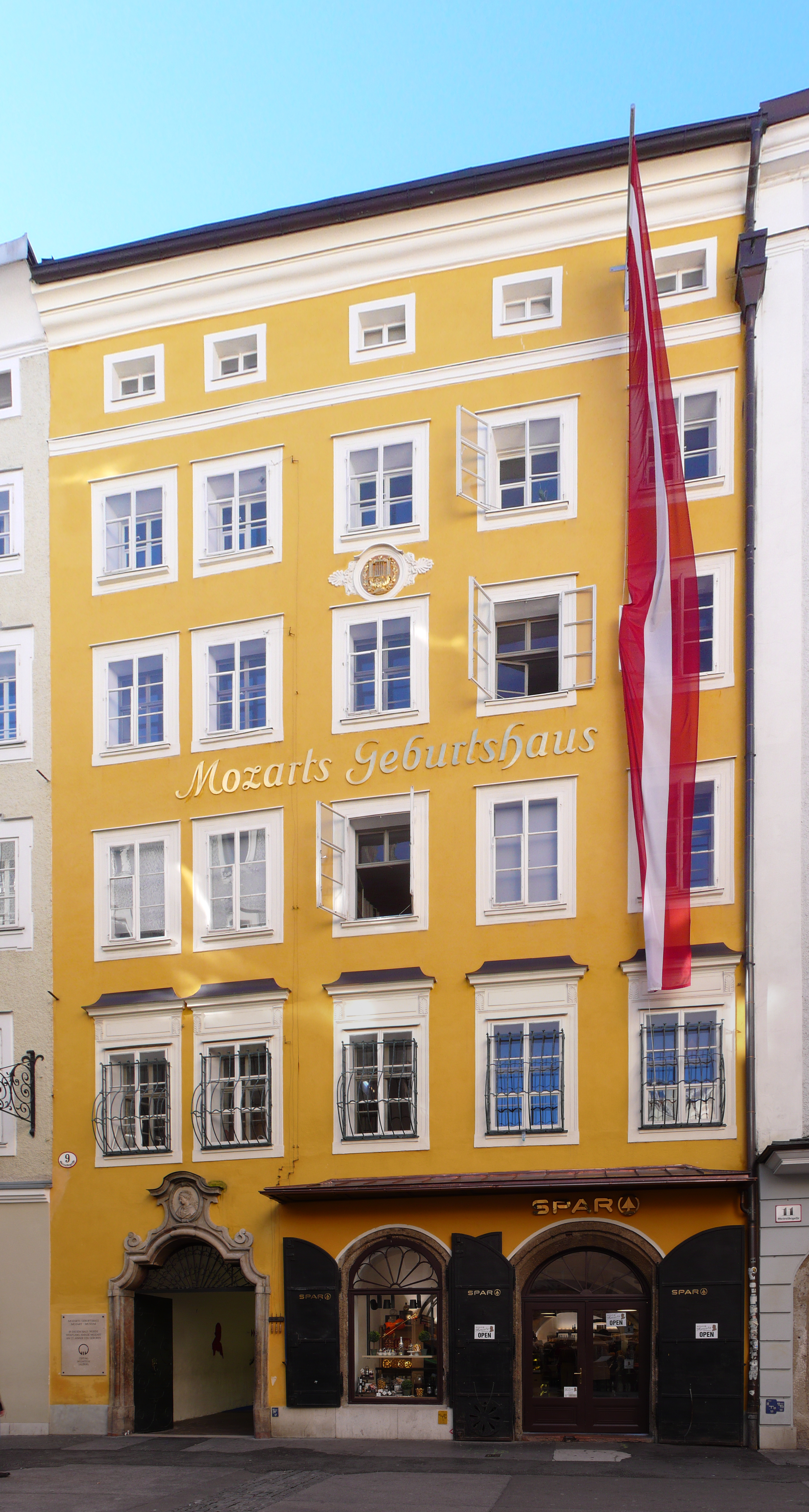|
Timeline Of Salzburg
The following is a timeline of the history of the city of Salzburg, Austria. Prior to 18th century * 696 - St Peter's Abbey, Salzburg founded. * 739 - Roman Catholic diocese of Salzburg established. * 774 - Cathedral built. Retrieved 29 November 2016 * 798 - made an archbishopric * 1077 - Hohensalzburg Castle construction begins. * 1167 - Fire. * 1287 - City rights granted. * 1350 - (church) built. * 1370 - Konrad Taufkind becomes mayor. * 1492 - (brewery) established. * 1498 - Jews expelled from Salzburg. * 1512 - (church) built. * 1519 - Hohensalzburg Castle expanded. * 1523 - (town hall) built. * 1525 - German Peasants' War. * 1587 - Wolf Dietrich Raitenau becomes prince-archbishop. * 1588 - construction begins on the Residenzplatz. * 1606 - Schloss Altenau built. * 1619 - Hellbrunn Palace built near Salzburg. * 1623 - Paris Lodron University opens. * 1652 - (library) founded. * 1668 - Cathedral rebuilt. * 1674 - church consecrated near Salzburg. * 1689 - (chur ... [...More Info...] [...Related Items...] OR: [Wikipedia] [Google] [Baidu] |
Holy Trinity Church, Salzburg
The Holy Trinity Church (german: Dreifaltigkeitskirche) is a Roman Catholic church in Salzburg, Austria. It was designed by Johann Bernhard Fischer von Erlach. History The church is designed as a central building and was built in the years 1694–1702. Authority of the church and the seminary was the founder Prince Archbishop Johann Ernst von Thun. The contract was carried out in 1694, the consecration of the partly unfinished church took place in 1699. The church, together with the same time build St. John's Church (hospital church) the first building designed by Johann Bernhard Fischer von Erlach in Salzburg. He used as models various religious buildings in Rome—especially Francesco Borromini's Church Sant'Agnese in Agone in Piazza Navona. While the church is characterized by a discreet use of decorative elements, the entire structure conveys a palatial impression. In addition to Fischer von Erlach and Bernhard Michael Mandl, who created the dome murals, the following sculpt ... [...More Info...] [...Related Items...] OR: [Wikipedia] [Google] [Baidu] |
International Mozarteum Foundation
The International Mozarteum Foundation (Internationale Stiftung Mozarteum) was founded in 1880 in Salzburg with its primary concern being the life and work of Wolfgang Amadeus Mozart. Closely affiliated with the Mozarteum University Salzburg, it was preceded by the Cathedral Music Association and Mozarteum of 1841. It collects Mozart memorabilia, maintains the Mozart library (the Bibliotheca Mozartiana), the Mozart birthplace and other Salzburg locations linked with Mozart. The Foundation also promotes research regarding Mozart and administers various awards such as the Mozart Medal, the Preis der Internationalen Stiftung Mozarteum, the Lilli Lehmann Medal The Lilli Lehmann Medal is an award by the Mozarteum International Foundation, named in honour of soprano Lilli Lehmann. Recipients Among the people who have received it are: * Ruth Kemper * Margaret Halstead, 1933 * Irmgard Seefried * George ..., and presents up to twenty other performances year-round. Mozartwoche The M ... [...More Info...] [...Related Items...] OR: [Wikipedia] [Google] [Baidu] |
Salzburg Hauptbahnhof
Salzburg Hauptbahnhof (German for Salzburg main station; abbreviated Salzburg Hbf and occasionally translated as Central Station) is the main railway station in Salzburg, capital of the federal state of Salzburg in Austria. It is the most important station in the agglomeration of Salzburg, and a major transportation hub in western Austria. Overview For a long time, Salzburg Hauptbahnhof has been a border station at the Austrian border with Germany. It serves both the Austrian Federal Railways (ÖBB) and the Deutsche Bahn AG. It also forms a junction between several ÖBB local and long-distance transport routes. At Salzburg Hbf, the Western Railway from Vienna and Linz links with the Rosenheim–Salzburg railway, on which, along with international trains, so-called ÖBB corridor services make express connections with the Tyrol and the Vorarlberg, via the ''German Corner'' at Rosenheim. Another main line, the Salzburg-Tyrol railway, heads from Salzburg Hbf in a southerly directi ... [...More Info...] [...Related Items...] OR: [Wikipedia] [Google] [Baidu] |
Salzburg Museum
Housed in the ' (to which it moved in 2005), the Salzburg Museum is the museum of artistic and cultural history of the city and region of Salzburg, Austria. It originated as the Provincialmuseum and was also previously known as the Museum Carolino-Augusteum. History Origins The Salzburg Museum was founded in 1834, when a small collection of military memorabilia was made accessible to the public to formalize the memories of the Napoleonic wars. After the Revolution of 1848, the collection became the official town museum of Salzburg. 20th century In 1924, the natural history objects of the museum were given to the Haus der Natur Salzburg. One year later, the folk culture collection opened a side-branch in the Monatsschlössl in the parks of Hellbrunn Palace. During World War II, the museum got three direct hits from bombs. Most of the collection had already been moved to mines that served as bunkers; however, the building was completely destroyed along with many objects too large ... [...More Info...] [...Related Items...] OR: [Wikipedia] [Google] [Baidu] |
Duchy Of Salzburg
The Duchy of Salzburg () was a Cisleithanian crown land of the Austrian Empire and Austria-Hungary from 1849 to 1918. Its capital was Salzburg, while other towns in the duchy included Zell am See and Gastein. Before becoming a crown land, Salzburg went through numerous changes of rulership. It is differentiated from its predecessor, the Prince-Archbishopric of Salzburg, as it was mediatized in 1803 through the and remained henceforth under secular rule as the Electorate () of Salzburg; in the following 43 years, it would undergo three more changes of rulership before becoming the crown land of Salzburg. History In the course of the German mediatization of 1803, the Prince-archbishopric of Salzburg, an ecclesiastical State of the Holy Roman Empire, was secularized as the Electorate of Salzburg, ruled by the Habsburg archduke Ferdinand III of Austria. However, two years later, this short-lived principality was annexed by the newly established Austrian Empire according to t ... [...More Info...] [...Related Items...] OR: [Wikipedia] [Google] [Baidu] |
Treaty Of Munich (1816)
{{Short description, 1816 treaty between Austria and Bavaria The Treaty of Munich (German ''Vertrag von München'') of 14 April 1816 normalized relations between the Austrian Empire and the Kingdom of Bavaria through several territorial exchanges. It was negotiated and signed at Munich, the capital of Bavaria, by the Baron de Wacquant-Geozelles on behalf of Emperor Francis I and by Counts Maximilian von Montgelas and Aloys von Rechberg on behalf of King Maximilian I. Bavaria ceded to Austria: *the parts of the Upper Austrian quarters of Hausruckviertel and Innviertel, that had to be ceded by Bavaria to Austria in the Treaty of Teschen of 1779 and were in turn ceded back to Bavaria in the Treaty of Schönbrunn of 1809 *the bailiwick (''Amt'') of Vils in the County of Tyrol *the duchy of Salzburg Austria ceded to Bavaria: *on the Left Bank of the Rhine: **the former French ''arrondissements'' of Kaiserslautern, Speyer and Zweibrücken, except the ''cantons'' of Worms and Pfedde ... [...More Info...] [...Related Items...] OR: [Wikipedia] [Google] [Baidu] |
Kingdom Of Bavaria
The Kingdom of Bavaria (german: Königreich Bayern; ; spelled ''Baiern'' until 1825) was a German state that succeeded the former Electorate of Bavaria in 1805 and continued to exist until 1918. With the unification of Germany into the German Empire in 1871, the kingdom became a federated state of the new empire and was second in size, power, and wealth only to the leading state, the Kingdom of Prussia. The polity's foundation dates back to the ascension of prince-elector Maximilian IV Joseph of the House of Wittelsbach as King of Bavaria in 1805. The crown would go on being held by the Wittelsbachs until the kingdom came to an end in 1918. Most of the border of modern Germany's Free State of Bavaria were established after 1814 with the Treaty of Paris, in which the Kingdom of Bavaria ceded Tyrol and Vorarlberg to the Austrian Empire while receiving Aschaffenburg and Würzburg. In 1918, Bavaria became a republic after the German Revolution, and the kingdom was thus succeeded ... [...More Info...] [...Related Items...] OR: [Wikipedia] [Google] [Baidu] |
Austrian Empire
The Austrian Empire (german: link=no, Kaiserthum Oesterreich, modern spelling , ) was a Central-Eastern European multinational great power from 1804 to 1867, created by proclamation out of the realms of the Habsburgs. During its existence, it was the third most populous monarchy in Europe after the Russian Empire and the United Kingdom. Along with Prussia, it was one of the two major powers of the German Confederation. Geographically, it was the third-largest empire in Europe after the Russian Empire and the First French Empire (). The empire was proclaimed by Francis II, Holy Roman Emperor, Francis II in 1804 in response to Napoleon's declaration of the First French Empire, unifying all Habsburg monarchy, Habsburg possessions under one central government. It remained part of the Holy Roman Empire until the latter's dissolution in 1806. It continued fighting against Napoleon throughout the Napoleonic Wars, except for a period between 1809 and 1813, when Austria was first all ... [...More Info...] [...Related Items...] OR: [Wikipedia] [Google] [Baidu] |
Mönchsberg
The Mönchsberg, at above sea level, is one of five mountains in the Salzburg, city of Salzburg in Austria. It flanks the western side of Altstadt Salzburg, Salzburg's historic city centre, and forms part of the Historic Centre of the City of Salzburg, city's UNESCO World Heritage Site. It is named after the Order of Saint Benedict, Benedictine monks of St Peter's Archabbey, Salzburg, St Peter's Abbey at the northern foot of the mountain. Geology The Mönchsberg shapes Salzburg's historic townscape with its long drawn back consisting of Conglomerate (geology), conglomerate (''Nagelfluh''). The massif is a solidified river crushed stone, deposed as a delta into the interglacial see (Mindel-Riss Interglacial), which was not cleared away thereafter by the glaciers protected from the hard limestone of the adjacent Festungsberg and so remained. Water ingressing into numerous bursts and cleavages can lead to falling stones and demolition of whole rock sections: In the early morning o ... [...More Info...] [...Related Items...] OR: [Wikipedia] [Google] [Baidu] |
Getreidegasse
(Grain Lane) is a busy List of shopping streets and districts by city, shopping street in the historic ''Altstadt Salzburg, Altstadt'' (Old Town) of Salzburg, Austria, a UNESCO List of World Heritage Sites in Austria, World Heritage Site since 1996. It is known for the Mozart's birthplace, birthplace of Wolfgang Amadeus Mozart at No. 9, where he lived until the age of 17. The narrow street is characterised by numerous high Townhouse, townhouses side by side with its wrought iron guild signs. Overview ''Getreidegasse'' runs parallel to, but one block back from, the Salzach river and today is part of a large pedestrian zone in the Old Town quarter. First mentioned as (derived from ''wikt:traben, traben'' 'to trot') about 1150, when it led from the historic Salzburg trade centre to the northwestern suburb of Mülln, its name was changed several times before it became the ''Getreidegasse''. The citizens received staple rights by the Archbishopric of Salzburg, prince-archbishops in the ... [...More Info...] [...Related Items...] OR: [Wikipedia] [Google] [Baidu] |
Mozart's Birthplace
Mozart's birthplace (German: or ) was the birthplace of Wolfgang Amadeus Mozart at No. 9 Getreidegasse in Salzburg, Austria. The Mozart family resided on the third floor from 1747 to 1773. Mozart himself was born here on 27 January 1756. He was the seventh child of Leopold Mozart, who was a musician of the Salzburg Royal Chamber. The museum depicts the early life of Wolfgang Amadeus Mozart, his first musical instruments, his friends, and his passionate interest in opera. The third floor exhibits Mozart's childhood violin as well as portraits, documents, and early editions of his music, and the second floor is devoted to Mozart's interest in opera and includes the clavichord on which he composed ''The Magic Flute''. The structure is owned by the Mozart Foundation. History The house was built in the 12th century on ground which had been part of the garden belonging to the Benedictine monks of St Peter's Abbey, Salzburg, St Peter's, Salzburg. Otto Keutzel, a merchant, is mentioned ... [...More Info...] [...Related Items...] OR: [Wikipedia] [Google] [Baidu] |





